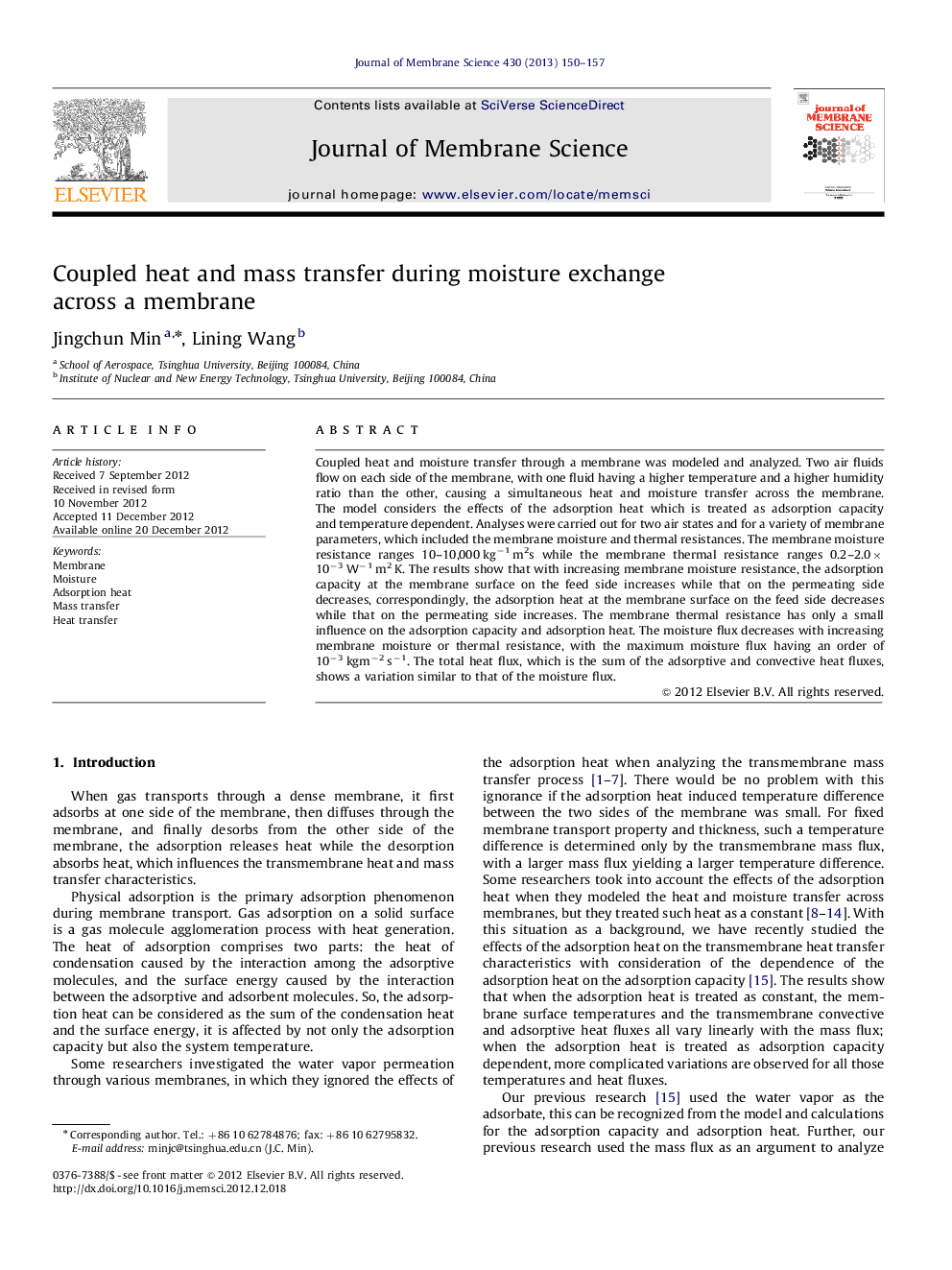| Article ID | Journal | Published Year | Pages | File Type |
|---|---|---|---|---|
| 634508 | Journal of Membrane Science | 2013 | 8 Pages |
Coupled heat and moisture transfer through a membrane was modeled and analyzed. Two air fluids flow on each side of the membrane, with one fluid having a higher temperature and a higher humidity ratio than the other, causing a simultaneous heat and moisture transfer across the membrane. The model considers the effects of the adsorption heat which is treated as adsorption capacity and temperature dependent. Analyses were carried out for two air states and for a variety of membrane parameters, which included the membrane moisture and thermal resistances. The membrane moisture resistance ranges 10–10,000 kg−1 m2s while the membrane thermal resistance ranges 0.2–2.0×10−3 W−1 m2 K. The results show that with increasing membrane moisture resistance, the adsorption capacity at the membrane surface on the feed side increases while that on the permeating side decreases, correspondingly, the adsorption heat at the membrane surface on the feed side decreases while that on the permeating side increases. The membrane thermal resistance has only a small influence on the adsorption capacity and adsorption heat. The moisture flux decreases with increasing membrane moisture or thermal resistance, with the maximum moisture flux having an order of 10−3 kgm−2 s−1. The total heat flux, which is the sum of the adsorptive and convective heat fluxes, shows a variation similar to that of the moisture flux.
► Coupled heat and moisture transfer through a membrane is modeled and analyzed. ► The model considers the effect of variable heat of adsorption. ► Analyses are made for various membrane moisture and thermal resistances. ► Transmembrane heat and moisture transfer characteristics is presented and discussed.
